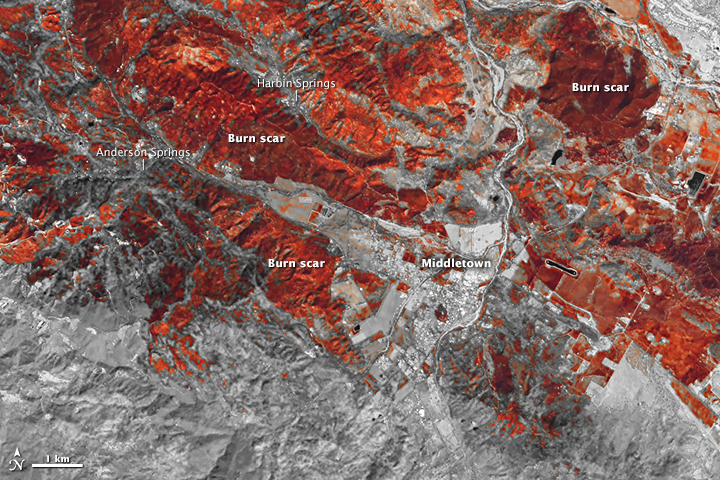FEMA is encouraging families and communities to take steps now to prepare now for the threat of El Niño.
Senior officials from the Federal Emergency Management Agency (FEMA) and the National Oceanic and Atmospheric Administration (NOAA) hosted an on the record media telephone briefing to discuss the possible impact of El Niño on the United States and outline specific steps Americans should take to prepare.
During a recent media briefing, Roy Wright, FEMA’s deputy associate administrator for Insurance and Mitigation and Mike Halpert, the deputy director of NOAA’s Climate Prediction Center encouraged homeowners to consider purchasing flood insurance, especially those in areas hard hit by wildfires.
Halpert said that above normal sea surface temperatures directly affect rainfall distribution in the tropics and that there is a 95 percent chance that El Nino will last through winter.
According to both agencies, this year’s El Niño, considered among the strongest on record, is expected to influence weather and climate patterns this winter by impacting the position of the Pacific jet stream.
Earlier this month, forecasters at NOAA’s Climate Prediction Center issued the U.S. Winter Outlook favoring cooler and wetter weather in Southern Tier states with above-average temperatures most likely in the West and across the Northern Tier. Heavy rain and flooding is likely, said Halpert.
In addition, Wright said there is an increased likelihood of tornado activity in the South.
In California, the extreme drought and fire scars will make it difficult for water to be easily absorbed into the ground. As a result there is a high risk of flooding there. According to Wright, people who dropped policies in the last decade may be at risk.
The National Interagency Fire Center reports that as of October 30, 2015, reveal that 9,407,571 acres have been damaged or destroyed by the 53,798 wildfires this year.
According to FloodSmart.gov, the National Flood Insurance Program website, the state’s rainy season typically occurs between October and March. According to the NFIP, “The charred and denuded ground in burned areas cannot absorb water easily, making them especially susceptible to flooding, mudflows, mudslides and landslides. Properties that were directly affected by the fire as well as those located below or downstream of the burned areas will all be at risk once the winter rainy season commences. Experts state that, after a wildfire, it can sometimes take three to five years for the vegetation to return to its previous state. Without this vegetation and ground cover, rainfall can cause soil on steep slopes to become saturated, liquefy and then flow down hills as a powerful and devastating mudflow.”
“Take steps to protect from effects of El Nino,” Wright said.
He recommended California residents buy flood insurance now because there is a 30 day waiting period for new policies to go into effect. Flood policies can be purchased no matter what the flood risk is. Wright said that even those living in low to moderate flood risk zones should consider buying flood insurance, based on historical evidence relating to similar weather events that occurred in 1982-83 and 1997-1998.
According to the agency, the number of flood policyholders in California has varied over the years. That said, since 1978, 11,501 out of California’s total 30,751 paid claims, 37.4% of paid claims, are due to the four El Niño years of 1982/83 and 1997/98. And looking at the percentage of policyholders who have paid claims (number of policyholders with paid claims divided by the total number of policyholders in the state), the percent of policyholders with paid claims in El Niño years (1982/83 and 1997/98) is 4.8 times higher than non-El Niño years.
Just a few inches of water from a flood can cause tens of thousands of dollars in damage, according to FEMA. From 2010 to 2014 the average residential flood claim amounted to more than $39,000. In 2014, the average flood insurance policy premium was about $700 per year.
“Preparation is the key to resiliency,” Halpert added.
FEMA offered some safety tips:
- Just 6 inches of moving water can knock you down, and 2 feet of water can sweep your vehicle away.
- If there is a chance of flash flooding, move immediately to higher ground. Flash floods are the #1 cause of weather-related deaths in the US.
- If floodwaters rise around your car but the water is not moving, abandon the car and move to higher ground. Do not leave the car and enter moving water.
- Avoid camping or parking along streams, rivers, and creeks during heavy rainfall. These areas can flood quickly and with little warning.
- Know where to go. You may need to reach higher ground quickly and on foot.
- Build or restock your emergency preparedness kit. Include a flashlight, batteries, cash, and first aid supplies.
- Bring in outdoor furniture and move important indoor items to the highest possible floor. This will help protect them from flood damage.
- Disconnect electrical appliances and don not touch electrical equipment if you are wet or standing in water. You could be electrocuted.
- If instructed, turn off your gas and electricity at the main switch or valve. This helps prevent fires and explosions.
- Return home only when authorities say it is safe.
- Be aware of areas where floodwaters have receded and watch out for debris. Floodwaters often erode roads and walkways.
- Avoid standing water as it may be electrically charged from underground or downed power lines.
Was this article valuable?
Here are more articles you may enjoy.


 Cyber Breach Affected 750,000 Canadian Investors, Regulator Says
Cyber Breach Affected 750,000 Canadian Investors, Regulator Says  Musk’s xAI Faces California AG Probe Over Grok Sexual Images
Musk’s xAI Faces California AG Probe Over Grok Sexual Images  Storm Goretti Batters Europe With Violent Winds, Power Cuts
Storm Goretti Batters Europe With Violent Winds, Power Cuts  OpenAI And Microsoft Sued Over Murder-Suicide Blamed on ChatGPT
OpenAI And Microsoft Sued Over Murder-Suicide Blamed on ChatGPT 